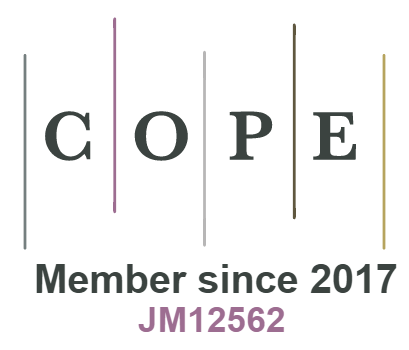Advancements in 5G Technology: Enhancing Connectivity and Performance in Communication Engineering
DOI:
https://doi.org/10.18034/ei.v10i2.715Keywords:
5G technology, Communication Engineering, Wireless Networks, Mobile Communications, Edge Computing, VirtualizationAbstract
The present research delves into how 5G technology developments can improve communication engineering performance and connectivity. The primary goals are to assess 5G's technical viability, performance potential, and real-world obstacles while offering recommendations for best practices in implementation and use. The study synthesizes current literature, research papers, and industry reports using a secondary data-based review technique to examine the technological underpinnings, performance improvements, real-world applications, and future directions of 5G. According to key findings, 5G dramatically improves data rates, lowers latency, and allows for ample device connectivity, opening up new possibilities for revolutionary applications in industries like industrial automation, smart cities, and healthcare. Strategic policy interventions are necessary to address cybersecurity risks, coverage restrictions, interoperability issues, and expensive infrastructure costs. To overcome these issues, provide fair access, and optimize the socioeconomic benefits of 5G, policymakers are encouraged to prioritize spectrum allocation, simplify regulatory frameworks, and provide incentives for investments. Future studies and developments in Edge Computing and AI-driven network optimization are emphasized as essential to improving 5G networks even more. The potential of 5G to alter communication engineering and accelerate inclusive digital transformation is shown by this thorough examination.
Downloads
References
De, P., Singh, S. (2016). Modified Random Forest Approach for Resource Allocation in 5G Network. International Journal of Advanced Computer Science and Applications, 7(11). https://doi.org/10.14569/IJACSA.2016.071152 DOI: https://doi.org/10.14569/IJACSA.2016.071152
Dhameliya, N., Sai Sirisha Maddula, Kishore Mullangi, & Bhavik Patel. (2021). Neural Networks for Autonomous Drone Navigation in Urban Environments. Technology & Management Review, 6, 20-35. https://upright.pub/index.php/tmr/article/view/141
Jeong, S., Jeong, Y., Lee, K., Lee, S., Yoon, B. (2016). Technology-Based New Service Idea Generation for Smart Spaces: Application of 5G Mobile Communication Technology. Sustainability, 8(11), 1211. https://doi.org/10.3390/su8111211 DOI: https://doi.org/10.3390/su8111211
Khan, M., Silva, B. N., Han, K. (2017). A Web of Things-Based Emerging Sensor Network Architecture for Smart Control Systems. Sensors, 17(2), 332. https://doi.org/10.3390/s17020332 DOI: https://doi.org/10.3390/s17020332
Khoda, M. E., Razzaque, M. A., Almogren, A., Hassan, M. M., Alamri, A. (2016). Efficient Computation Offloading Decision in Mobile Cloud Computing over 5G Network. Mobile Networks and Applications, 21(5), 777-792. https://doi.org/10.1007/s11036-016-0688-6 DOI: https://doi.org/10.1007/s11036-016-0688-6
Latif, S., Qadir, J., Farooq, S., Imran, M. A. (2017). How 5G Wireless (and Concomitant Technologies) Will Revolutionize Healthcare?. Future Internet, 9(4), 93. https://doi.org/10.3390/fi9040093 DOI: https://doi.org/10.3390/fi9040093
Li, X., Li, D., Wan, J., Vasilakos, A. V., Lai, C-f. (2017). A Review of Industrial Wireless Networks in the Context of Industry 4.0. Wireless Networks, 23(1), 23-41. https://doi.org/10.1007/s11276-015-1133-7 DOI: https://doi.org/10.1007/s11276-015-1133-7
Maddula, S. S. (2018). The Impact of AI and Reciprocal Symmetry on Organizational Culture and Leadership in the Digital Economy. Engineering International, 6(2), 201–210. https://doi.org/10.18034/ei.v6i2.703 DOI: https://doi.org/10.18034/ei.v6i2.703
Maddula, S. S., Shajahan, M. A., & Sandu, A. K. (2019). From Data to Insights: Leveraging AI and Reciprocal Symmetry for Business Intelligence. Asian Journal of Applied Science and Engineering, 8(1), 73–84. https://doi.org/10.18034/ajase.v8i1.86 DOI: https://doi.org/10.18034/ajase.v8i1.86
Mullangi, K., Maddula, S. S., Shajahan, M. A., & Sandu, A. K. (2018). Artificial Intelligence, Reciprocal Symmetry, and Customer Relationship Management: A Paradigm Shift in Business. Asian Business Review, 8(3), 183–190. https://doi.org/10.18034/abr.v8i3.704 DOI: https://doi.org/10.18034/abr.v8i3.704
Mullangi, K., Yarlagadda, V. K., Dhameliya, N., & Rodriguez, M. (2018). Integrating AI and Reciprocal Symmetry in Financial Management: A Pathway to Enhanced Decision-Making. International Journal of Reciprocal Symmetry and Theoretical Physics, 5, 42-52. https://upright.pub/index.php/ijrstp/article/view/134
Naveen, T. H., Vasanth, G. (2017). Qualitative Study of Existing Research Techniques on Wireless Mesh Network. International Journal of Advanced Computer Science and Applications, 8(3). https://doi.org/10.14569/IJACSA.2017.080308 DOI: https://doi.org/10.14569/IJACSA.2017.080308
Nizamuddin, M., Natakam, V. M., Sachani, D. K., Vennapusa, S. C. R., Addimulam, S., & Mullangi, K. (2019). The Paradox of Retail Automation: How Self-Checkout Convenience Contrasts with Loyalty to Human Cashiers. Asian Journal of Humanity, Art and Literature, 6(2), 219-232. https://doi.org/10.18034/ajhal.v6i2.751 DOI: https://doi.org/10.18034/ajhal.v6i2.751
Pydipalli, R., Anumandla, S. K. R., Dhameliya, N., Thompson, C. R., Patel, B., Vennapusa, S. C. R., Sandu, A. K., & Shajahan, M. A. (2022). Reciprocal Symmetry and the Unified Theory of Elementary Particles: Bridging Quantum Mechanics and Relativity. International Journal of Reciprocal Symmetry and Theoretical Physics, 9, 1-9. https://upright.pub/index.php/ijrstp/article/view/138
Richardson, N., Pydipalli, R., Maddula, S. S., Anumandla, S. K. R., & Vamsi Krishna Yarlagadda. (2019). Role-Based Access Control in SAS Programming: Enhancing Security and Authorization. International Journal of Reciprocal Symmetry and Theoretical Physics, 6, 31-42. https://upright.pub/index.php/ijrstp/article/view/133
Rodriguez, M., Shajahan, M. A., Sandu, A. K., Maddula, S. S., & Mullangi, K. (2021). Emergence of Reciprocal Symmetry in String Theory: Towards a Unified Framework of Fundamental Forces. International Journal of Reciprocal Symmetry and Theoretical Physics, 8, 33-40. https://upright.pub/index.php/ijrstp/article/view/136
Shajahan, M. A. (2018). Fault Tolerance and Reliability in AUTOSAR Stack Development: Redundancy and Error Handling Strategies. Technology & Management Review, 3, 27-45. https://upright.pub/index.php/tmr/article/view/126
Shajahan, M. A. (2021). Next-Generation Automotive Electronics: Advancements in Electric Vehicle Powertrain Control. Digitalization & Sustainability Review, 1(1), 71-88. https://upright.pub/index.php/dsr/article/view/135
Shajahan, M. A., Richardson, N., Dhameliya, N., Patel, B., Anumandla, S. K. R., & Yarlagadda, V. K. (2019). AUTOSAR Classic vs. AUTOSAR Adaptive: A Comparative Analysis in Stack Development. Engineering International, 7(2), 161–178. https://doi.org/10.18034/ei.v7i2.711 DOI: https://doi.org/10.18034/ei.v7i2.711
Thembelihle, D., Rossi, M., Munaretto, D. (2017). Softwarization of Mobile Network Functions towards Agile and Energy Efficient 5G Architectures: A Survey. Wireless Communications & Mobile Computing (Online), 2017. https://doi.org/10.1155/2017/8618364 DOI: https://doi.org/10.1155/2017/8618364
Vennapusa, S. C. R., Fadziso, T., Sachani, D. K., Yarlagadda, V. K., & Anumandla, S. K. R. (2018). Cryptocurrency-Based Loyalty Programs for Enhanced Customer Engagement. Technology & Management Review, 3, 46-62. https://upright.pub/index.php/tmr/article/view/137
Yarlagadda, V. K., & Pydipalli, R. (2018). Secure Programming with SAS: Mitigating Risks and Protecting Data Integrity. Engineering International, 6(2), 211–222. https://doi.org/10.18034/ei.v6i2.709 DOI: https://doi.org/10.18034/ei.v6i2.709
Ying, D., Patel, B., & Dhameliya, N. (2017). Managing Digital Transformation: The Role of Artificial Intelligence and Reciprocal Symmetry in Business. ABC Research Alert, 5(3), 67–77. https://doi.org/10.18034/ra.v5i3.659 DOI: https://doi.org/10.18034/ra.v5i3.659
Downloads
Published
Issue
Section
License
Copyright (c) 2022 Bhavik Patel, Vamsi Krishna Yarlagadda, Niravkumar Dhameliya, Kishore Mullangi, Sai Charan Reddy Vennapusa

This work is licensed under a Creative Commons Attribution-NonCommercial 4.0 International License.
Engineering International is an Open Access journal. Authors who publish with this journal agree to the following terms:
- Authors retain copyright and grant the journal the right of first publication with the work simultaneously licensed under a CC BY-NC 4.0 International License that allows others to share the work with an acknowledgment of the work's authorship and initial publication in this journal.
- Authors are able to enter into separate, additional contractual arrangements for the non-exclusive distribution of the journal's published version of their work (e.g., post it to an institutional repository or publish it in a book), with an acknowledgment of its initial publication in this journal. We require authors to inform us of any instances of re-publication.









